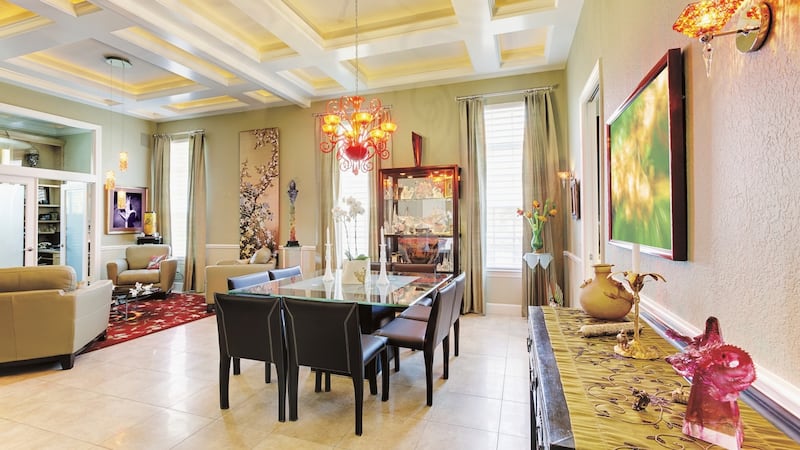Nearly every home has a dark corner if not an entire room which is not blessed with natural light pouring through. Traditionally, the darker rooms of a home were earmarked for formal dining rooms or spare bedrooms, which were used so infrequently, brightness was not such a big deal. However, with most home owners trying to maximize every square inch of living space these days (without having to knock down walls), getting the lighting right can turn a gloomy room into a bright, inviting one.
Justin McCarthy, lighting designer with Independent Light, a lighting and design consultancy, says “homeowners are always trying to send light downward in a room but sending it upwards actually makes for more modern illumination and creates the appearance of a larger space too. For instance, “lighting the perimeter of the ceiling is a great way of drawing the eye upwards and exaggerating the height of the room. We achieve it by placing discrete LED strips along the tops of kitchen presses, cabinets, book shelves, picture rails or even on the top lip of coving if the shape allows for it. If there’s no design details at that height, you can easily install a mock lip to hid the LED strips behind. When you use warm white LED strips (around 2,700º Kelvin) around the ceiling it gives an almost celestial ring of sunlight beaming through the roof,” says McCarthy.
Another of McCarthy’s tricks of the trade is to put light sources in the floor, by way of spotlights, to send even more light upwards. “This used to be very unsafe as the lights would get too hot and burn the feet of people or animals walking over them and they were often so dazzling they’d hurt your eyes. But the new generation LED luminaires hardly generate any heat so are perfectly safe and there’re low glare, so are much softer on the eye too.” You can install them into wooden floorboards, tiles and stone. If peppering your floor with lights isn’t for you, McCarthy suggests considering placing them under focal points – like the hearth of a fireplace.

McCarthy likes to add pendant lighting and side lamps, only as the last layer of a project. On a practical level, he advises to, “talk to your electrician about getting all the various layers – ceiling lights, central lights, the floor lights, cabinet lights, etc all put on a dimmer switch pertaining to each level. Also a lot of homeowners don’t realise there is vast differences in the quality and colour rendition properties (CRI) of bulbs, as a rule of thumb the higher the CRI, the better things will look. Discuss this with your electrician and try to buy bulbs from lighting suppliers rather than DIY stores or the supermarket, as they are of far superior CRI quality,” says McCarthy.
independantlight.ie












